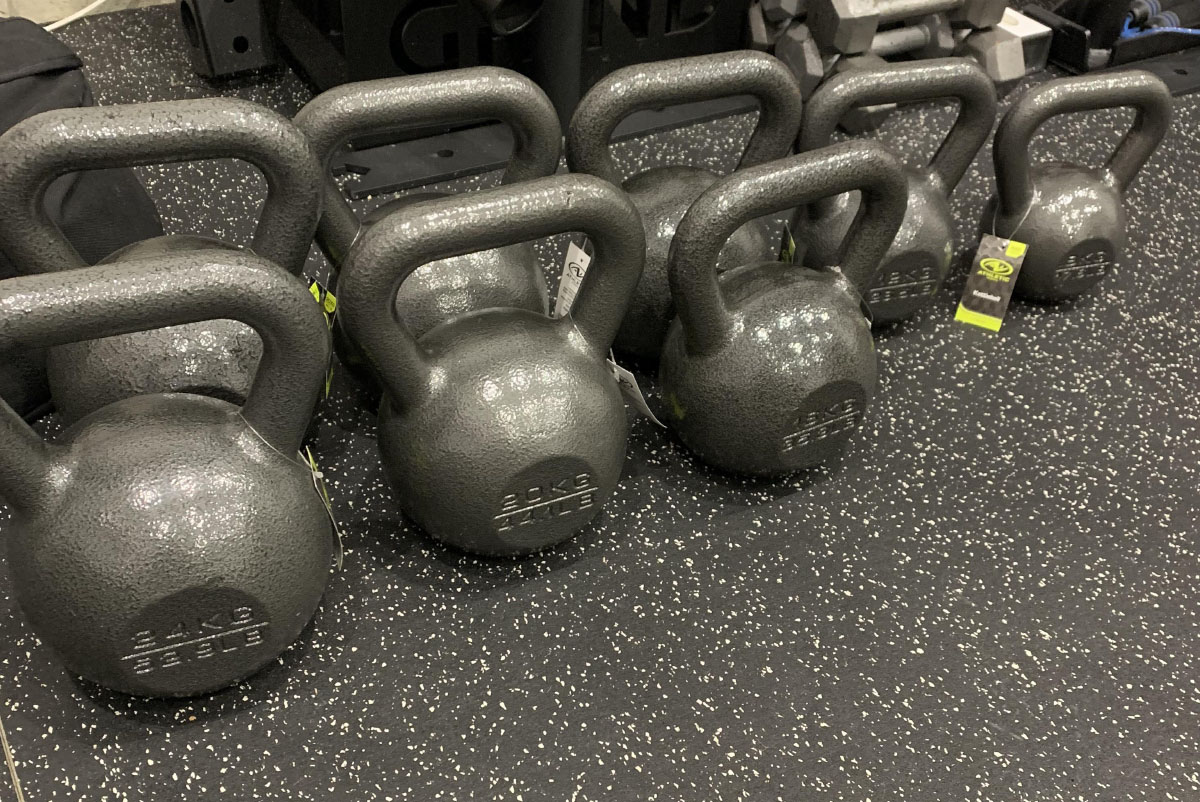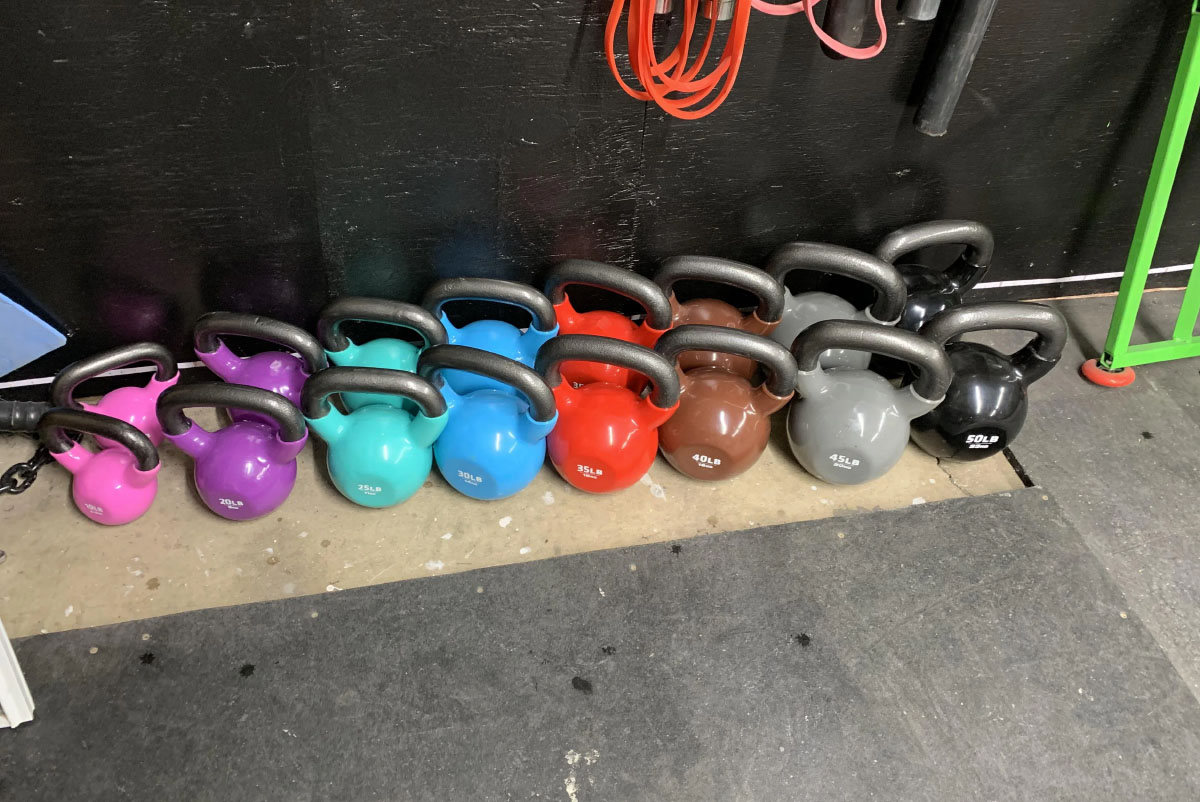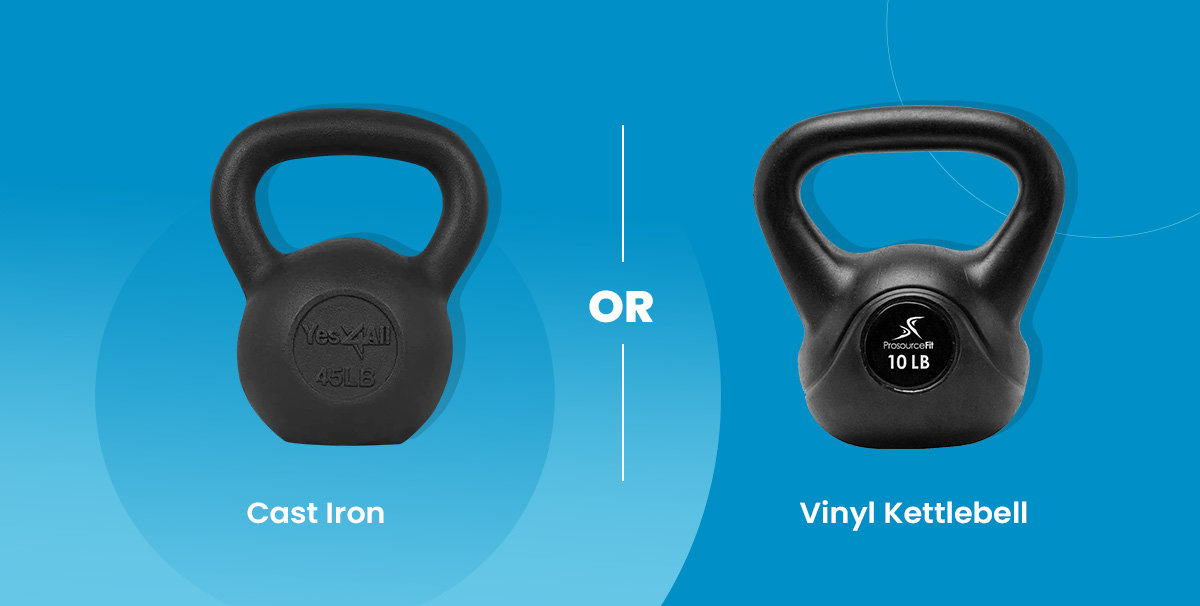When I tested this, during my trial of using both Cast Iron and Vinyl Kettlebells, my experience was that they both have their own unique benefits.
Cast iron kettlebells are made of solid cast iron and are typically the traditional choice for kettlebell training. They have a rougher texture and a classic look. Vinyl kettlebells, on the other hand, have a cast iron core but are coated with a layer of vinyl, making them more comfortable to grip and less likely to damage floors or other equipment.
In this blog post, I will discuss the difference between Cast Iron and Vinyl Kettlebells, as well as give an overview of both types for you to decide which one is the best fit for your needs.
The Difference Between Vinyl and Cast-iron Kettlebells
There are a number of differences between Cast Iron and Vinyl Kettlebells. Read on as I discuss each of them in detail:
Material
Cast iron kettlebells are made of solid iron and are typically coated with a layer of enamel or powder coating.
The iron is great for withstanding extreme temperatures, which makes it ideal for outdoor use.
The coating helps reduce rusting and protects the surface of the kettlebells from scratches.
On the other hand, Vinyl Kettlebells are made of a cast iron core surrounded by a layer of durable vinyl material. This design helps protect floors and other surfaces from damage.
However, the vinyl material is not as heat resistant as the cast iron, so it is best to keep these kettlebells indoors.
Size & Weight

Cast iron kettlebells are typically more substantial in size and weight compared to the vinyl variety. They range in size from 10 pounds to a maximum of 90 pounds, with increments ranging from 5-15 pounds per increase in weight.
Vinyl Kettlebells tend to be smaller and lighter than their cast iron counterparts. They come in sizes ranging from 5 pounds to 50 pounds, with increments usually starting at 2.5 and going up from there.
Durability
Cast iron kettlebells are made from solid cast iron and are considered to be very durable. They are designed to withstand heavy usage and can last very long without showing signs of wear and tear.
This durability is because cast iron is a very hard and strong material, which makes it resistant to damage from impact or use.
On the other hand, vinyl kettlebells are typically made with a cast iron core that is covered with a layer of vinyl.
While the vinyl coating can provide some protection against scratches or dents, it is not as durable as the solid cast iron construction of traditional kettlebells.
Over time, the vinyl coating may become worn or cracked, exposing the underlying metal and compromising the integrity of the kettlebell.
In addition, the vinyl coating on kettlebells can make them more susceptible to damage from exposure to the elements.
If left outside in the sun or rain, the vinyl coating may start to fade or deteriorate, which can lead to further damage to the kettlebell.
Color

Cast iron kettlebells usually come in various colors, including black, white, and grey. They also may have painted designs or textured surfaces that add to their visual appeal.
Vinyl Kettlebells typically come in solid colors, such as blue or green. Some manufacturers may offer custom designs on vinyl kettlebells, although these are usually a more expensive option.
Grip & Handle
Cast iron kettlebells tend to have a rougher texture, which can be uncomfortable for some users. However, the rougher feel does make them easier to grip and handle when doing exercises such as swings or cleans.
Vinyl Kettlebells are smoother in texture due to their vinyl coating. This makes them more comfortable to hold and use, but it also means that they may be harder to grip when exercising with heavier weights.
Performance
The performance of each type of kettlebell depends on its size and weight, as well as the user’s skill level. Both types can be used for various exercises, such as swings, squats, and lunges.
For a few reasons, you will find cast iron kettlebells better in performance than vinyl kettlebells.
Cast iron is heavier than vinyl, so it provides more resistance during exercises. It also has better heat retention, which can be beneficial when performing outdoor exercises in hot weather.
Lastly, cast iron kettlebells are generally easier to grip due to their rougher texture and greater weight.
Built for Beginners
Vinyl kettlebells are typically better suited for beginners due to their smaller size and lighter weight. They are also more comfortable to hold and less intimidating than the traditional cast iron kettlebells, making them ideal for users just starting with strength training.
Price
Cast iron kettlebells tend to be more expensive than their vinyl counterparts. This is primarily due to the material they are made of and the manufacturing process involved in crafting them.
Vinyl kettlebells are usually cheaper and more affordable than cast iron kettlebells. However, they are less durable than traditional cast iron models and may be more susceptible to damage or wear over time.
Cast Iron Kettlebell: Overview
Cast iron kettlebells are typically made of solid cast iron and are shaped like a cannonball with a handle attached to the top.
Kettlebell workouts involve various dynamic movements that engage multiple muscle groups and can improve cardiovascular endurance, strength, and overall fitness.
Exercises such as swings, cleans, snatches, and presses can be performed with kettlebells and can be used for upper and lower-body workouts.
One of the key benefits of using cast iron kettlebells is their versatility. They are suitable for people of all fitness levels and can be used for a wide range of workouts, from high-intensity interval training (HIIT) to strength and conditioning exercises.
Kettlebells can also be incorporated into other workout routines, such as yoga or Pilates, to add an extra level of intensity.
Cast iron kettlebells are known for their durability and can last for years with proper care (Take a look at them on Amazon). However, if not used correctly or stored improperly, the paint or coating of the kettlebell may start to fade or deteriorate, leading to further damage.
Vinyl Kettlebell: Overview
Vinyl kettlebells are made from vinyl or rubber-coated cast iron. They offer many of the same benefits as traditional cast iron models but with a few added features.
The main advantage of vinyl kettlebells is their lighter weight, making them easier for beginners or those new to strength training (Check them on Amazon).
They are also less likely to cause blisters or skin irritation when used for extended periods, as the coatings provide a cushion layer and protection from the iron material.
Vinyl kettlebells come in various sizes and weights, allowing users to choose the right one based on their fitness level and workout goals.
They can be used for many of the same exercises as cast iron models, such as swings, cleans, snatches, presses, and squats. However, they may not perform as well with heavier weights or more advanced exercises.
How Can I Buy Kettlebells?
Kettlebells can be purchased from a variety of retailers, including online stores (Amazon), sporting goods stores, and fitness equipment suppliers. It is important to consider the size and weight of the kettlebell when purchasing one, as this will determine its suitability for different exercises.
Which One Do I Recommend?
It depends on the user’s goals and fitness level. Vinyl kettlebells are an excellent choice for those just starting out with strength training due to their lighter weight and comfortable grip.
However, cast iron kettlebells may be a better option for users looking for more advanced exercises, as they can handle heavier weights and provide greater stability.



